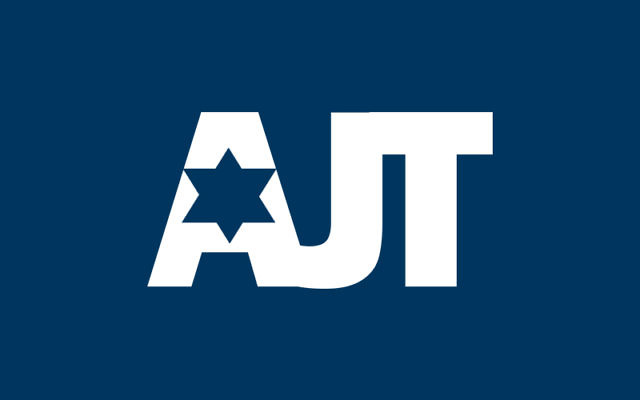A Medical Mensch at the AJFF
Jaffe’s Jewish Jive
By Marcia Jaffe
mjaffe@atljewishtimes.com
Dr. Rick Hodes examines an Ethiopian spine patient in Addis Ababa.We were fascinated when Dr. Rick Hodes introduced his movie “Zemene” on Monday, Feb. 16, at Lefont Sandy Springs for the Atlanta Jewish Film Festival. Hodes is no stranger to many of us as I first read about him in Atlantan Melissa Fay Greene’s book “There’s No Me Without You.” I was mesmerized with the tikkun olam they both practiced with the care and adoption of Ethiopian children.
Hodes, known internationally, was Person of the Week on ABC’s “World News Tonight,” a guest on “Good Morning America,” a CNN Hero, and the subject of an HBO documentary and a book, “This Is Soul: The Mission of Rick Hodes.”
“Zemene” follows a hunchback girl who is mocked, malnourished and turned away from the village hospital. A chance encounter with Hodes illuminates his faith-based compassion in transforming individual lives and communities.
Hodes, a ba’al teshuva and Fulbright scholar who trained at Johns Hopkins, has adopted five Ethiopian children and never married (he is “available”). He has treated refugees from Zaire, Rwanda, Somalia and Tanzania and was pivotal in Operation Solomon, the airlift of Ethiopians to Israel. My nephew Bret Caller, a volunteer, accompanied Hodes on a subsequent flight and was overcome with emotion at the power of Jewish good will.
“It is a life-changing experience to witness the squalor these refugees live in and then to work with Dr. Hodes to help transform their lives by moving them to Israel. He is an incredible person,” Caller said.
Sandy Bailey in the “Zemene” audience said of Hodes: “What a big heart. That’s what I saw.”
Since 1990 Hodes (rickhodes.org) has been the doctor for the American Jewish Joint Distribution Committee. Here is an excerpt from our interview.
Jaffe: How would you quantify the scope of what you have accomplished over the past decade?
Hodes: Basically I have treated 1 percent of Israel’s total population of 7 million — over 70,000 Ethiopians who have immigrated since I joined the JDC.
Jaffe: Do you only treat Jewish Ethiopians?
Hodes: Absolutely not. This is JDC, a nonsectarian program. We see anyone who walks through our doors. These days there are almost no immigrants.
Jaffe: Do patients have an understanding that a Jewish organization is funding this?
Hodes: Yes, most definitely. If asked, I say, “We follow the Old Testament. And we are tied to the nation of Israel.” I find them to be appreciative.
Jaffe: I saw the movie “Live and Become” about Falashas having to pretend to be Jewish to enter Israel. Is that accurate?
Hodes: They enter two ways: the Law of Return, where only one grandparent has to be Jewish, or the Law of Entry — can be non-Jewish family unification. Fortunately, I am a doctor and don’t have to make these decisions.
Jaffe: So you are salaried by the JDC?
Hodes: Correct.
Jaffe: You do this with what staff?
Hodes: I am the only M.D. We have two full-time nurses and other full-time assistants.
Jaffe: What types of conditions do you treat?
Hodes: Rheumatic and congenital heart disease. Spinal deformities — TB of the spine and scoliosis, injuries, trauma. Childhood cancers.
Jaffe: Why do Ethiopians have such dramatic spinal disease? Is it poor nutrition?
Hodes: Good question. There is no data on the prevalence. It has been said that I have the largest collection of the worst spines in the world. … After 50 degrees, we do surgery. We see some way over 100 or 200 degrees. Some are really terrible and severe.
Jaffe: How is that possible?
Hodes: We think of something folded as 180 degrees. We see spines that are shaped like a figure 8 or a saxophone.
Jaffe: Where do you see yourself in 10 years?
Hodes: In 2006 we saw 20 patients. In 2012 we saw 296. In 2014, 400. We partner with Ghana and send surgeries there. We need to train staff to be able to operate locally.
Jaffe: What does the treatment consist of?
Hodes: For severe patients, we drill four holes in the skull. Then for 23 hours a day, they are stretched — when they sit, sleep or stand. Then we operate. Then two to seven months in traction.
Jaffe: Atlanta welcomes you.
Hodes: I have been here before as I have a son who works at Emory. I have many friends here, and I like Southern friendliness.
A poem from an Ethiopian patient:
“You are the one who has made dark life light
“You are the one who has treated the broken heart.”




comments